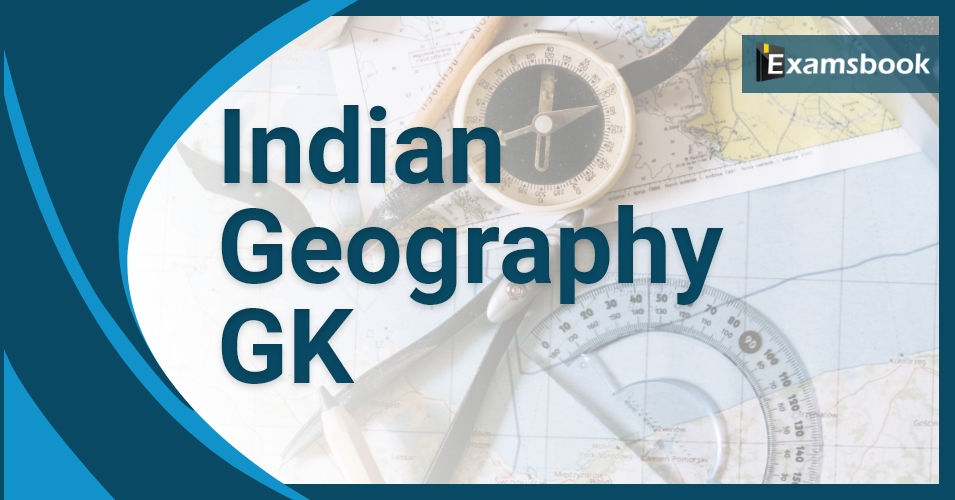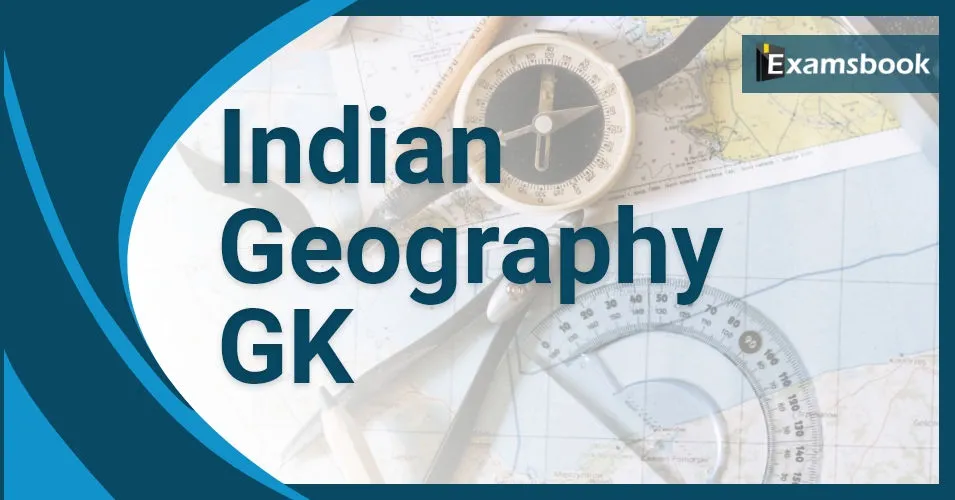


The Indian geographical form is quite interesting from almost every point of view. Due to the geographical structure of India and so many variations, it is necessary to know all the students who are preparing for competitive exam. Also want to get full marks in GK.
Here is the selective and important Indian Geography GK Question with answers on General Knowledge for all types of competitive exams. These Indian Geography GK questions have been asked in competitive exams and there are chances to ask again for competitive exams.
You can also read the important questions of Indian Constitution and 1000 General GK questions.
If you are finding Related Quizzes, you can check on the best website for competitive exams practice with quizzes here: Current Affairs Mock Test 2019 and Monthly Current Affairs.
Choose your topic for Indian Geography Questions:
Let's practice from these Indian geography questions and answers for exams.
| Indian Geography GK Questions and Answers |
Geography very important questions |
| Indian Geography GK Questions in Hindi |
Geography of India Questions and Answers |
Also, Read Latest Current Affairs Questions 2023: Current Affairs Today
"Put your knowledge to the test and excel with our General Knowledge Mock Test and Current Affairs Mock Test!"
Q :
Which state has the largest area in India?
(A) Uttar Pradesh
(B) Madhya Pradesh
(C) Maharashtra
(D) Rajasthan
In terms of area Rajasthan is the largest state of India followed by Madhya Pradesh, Maharashtra, Andhra Pradesh and Uttar Pradesh
Which state has the largest constline in India?
(A) Andhra Pradesh
(B) Maharashtra
(C) Orissa
(D) Tamil Nadu
Gujarat has the longest coast line in India followed by Andhra Pradesh.
The Coast line of India is-
(A) 5500km
(B) 6500km
(C) 7500km
(D) 8400km
India’s coast line is 7516km.
Where is Lakshadweep Island located-
(A) Bay of Bengal
(B) Arabian Sea
(C) Indian Ocean
(D) None of these
Lakshadweep is situated in south west part of Indian Ocean located in Arabian Sea. Its capital is Kavaratti. It is the smallest of all union territories of India.
How many islands are there in Lakshadweep -
(A) 17
(B) 27
(C) 36
(D) 47
36 Islands form Lakshadweep. It is the smallest union territory. Its capital is Kavaratti.
Pin valley National park is situated in:
(A) Andhra Pradesh
(B) Arunachal Pradesh
(C) Himachal Pradesh
(D) Madhya Pradesh
Pin Valley National Park is a National park of India located in the Spiti Valley in the Lahaul and Spiti district, in the state of Himachal Pradesh. It is located in far northern India. It is part of Cold Desert (biosphere reserve).
The Indian Standard Time is calculated from the clock tower of ______.
(A) Hamirpur
(B) Rampur
(C) Mirzapur
(D) Sambalpur
Indian Standard Time is calculated from the clock tower in Mirzapur nearly exactly on the reference longitude of IST at 82°30'E, within four angular minutes. In 1905, the meridian passing east of Allahabad was declared as a standard time zone for British India and was declared as IST in 1947 for the Dominion of India.
As per the 2011 census of India, population density of which of the following states was less than 100 people per square kilometre?
(A) Himachal Pradesh
(B) Rajasthan
(C) Sikkim
(D) Tripura
The population density of India in the year 2011 was 382 persons per square km. Densities vary from 1,102 persons per square km in Bihar to only 17 persons per square km in Arunachal Pradesh. Arunachal Pradesh has the lowest population density in India.
The steep rocky coast rising almost vertically above sea water is called ______.
(A) sea caves
(B) sea cliff
(C) sea arches
(D) ox-bow lake
A sea cliff refers to a steep rocky coast that rises almost vertically above the seawater. Sea cliffs are typically formed by the erosive action of waves over a long period of time, causing the coastline to retreat inland and leaving behind a vertical or near-vertical rock face. These formations are often found in areas with rugged coastlines and are a result of various geological processes and erosion by the sea. Sea cliffs can be impressive natural landmarks and are often admired for their dramatic and picturesque views.
Which of the following rivers of India drains into the Bay of Bengal?
(A) Tapi
(B) Godavari
(C) Narmada
(D) Mahi
Mahanadi, Godavari, Krishna and Kaveri drain in the Bay of Bengal whereas Narmada drains in the Arabian Sea.
Get the Examsbook Prep App Today